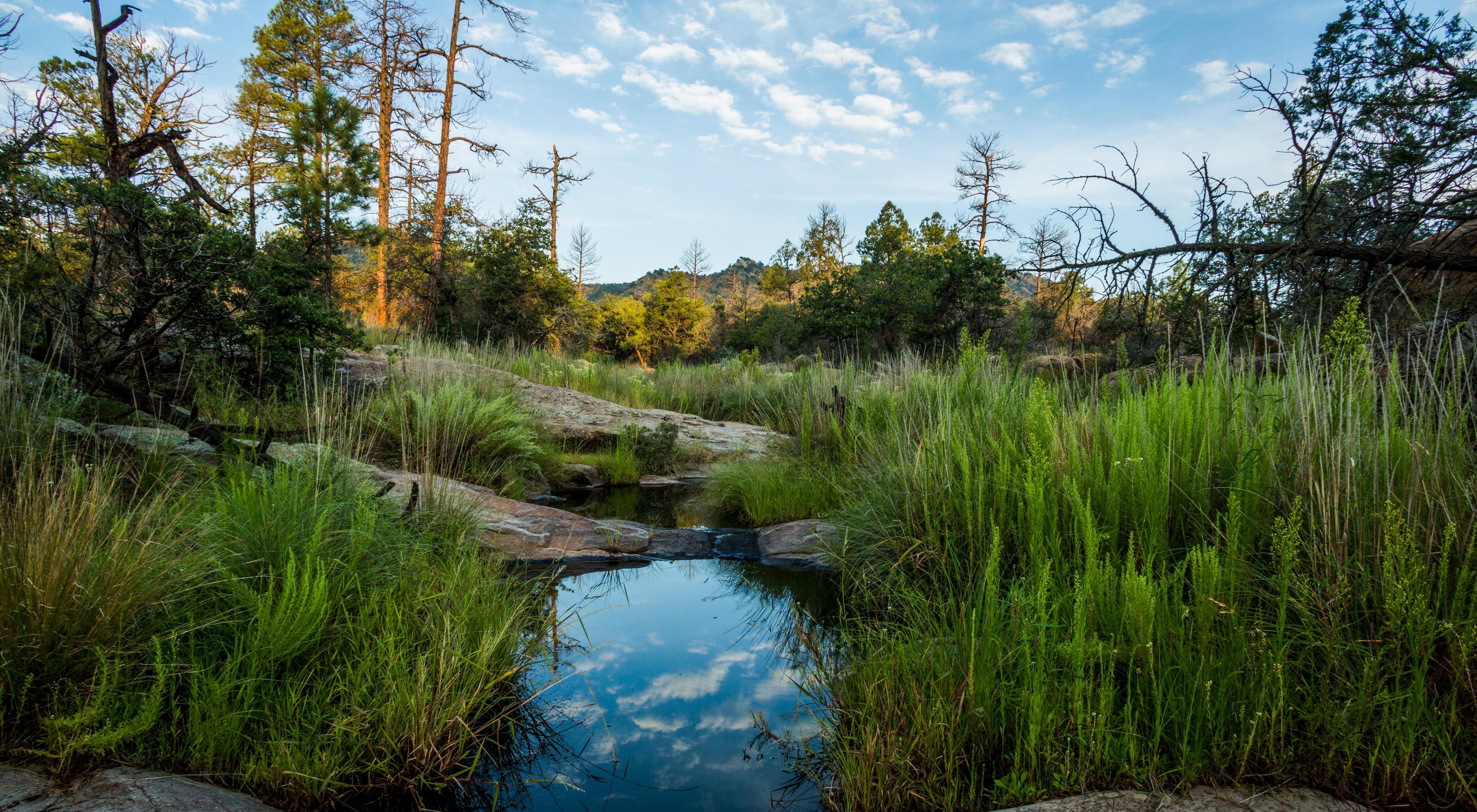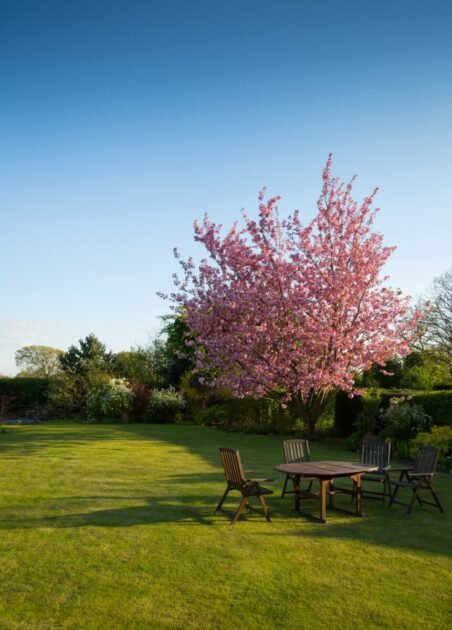Revamp your lawn to create a haven for biodiverse wildlife by incorporating native plants, attracting pollinators, going organic, making compost, practising no-mow or low-mow maintenance, inviting local wildlife, adding a water source, and removing invasive plants. A biodiverse lawn with native plants benefits the environment and reduces the need for harmful chemicals, making it more resilient to pests and diseases.
Resources like feeders, water stations, and houses can attract wildlife to your yard. By making these changes, you can transform your lawn into a thriving habitat for biodiverse wildlife and create a beautiful and sustainable outdoor space.
Introduction To Revamping Your Lawn
Transform your barren lawn into a biodiverse haven for wildlife with these simple steps: grow native plants, attract pollinators, go organic, create compost, invite local wildlife, and add a water source. Enhance your yard and support the environment while reducing the need for harmful chemicals.
Understanding The Importance Of Biodiversity In Lawns
Lawns are more than just patches of green grass; they play a vital role in supporting biodiversity and creating habitats for wildlife. Understanding the importance of biodiversity in lawns is crucial for those looking to revamp their yards into havens for diverse flora and fauna.
Benefits Of Creating A Wildlife Haven In Your Yard
The benefits of creating a wildlife haven in your yard are numerous and far-reaching. By welcoming a variety of plants, insects, birds, and other wildlife, you not only enhance the beauty of your lawn but also contribute to a healthier ecosystem.
Here are some key benefits of transforming your yard into a wildlife sanctuary:
- Healthy ecosystem: A biodiverse lawn promotes a balanced ecosystem, as different species interact and rely on each other for survival.
- Natural pest control: By attracting beneficial insects like ladybugs and lacewings, you can reduce the need for chemical pesticides, keeping your lawn from harmful pests.
- Pollination: Native plants, such as bees, butterflies, and hummingbirds, attract pollinators, aiding in pollinating flowers and fruit-bearing plants.
- Improved soil health: Diverse plant species help improve soil fertility by enriching it with organic matter and preventing erosion.
- Water conservation: Deep-rooted native plants and a well-designed landscape can reduce water runoff and promote water infiltration, minimizing the need for irrigation.
- Aesthetically pleasing: A yard teeming with vibrant flowers, bustling bird feeders, and the soothing sounds of chirping birds adds a touch of beauty and tranquillity to your surroundings.
In conclusion, revamping your lawn to create a haven for biodiverse wildlife benefits the environment. It provides a visually stunning and peaceful outdoor space for you and your family to enjoy.

Methods To Revamp Your Lawn
Transform your lawn from a barren wasteland into a haven for diverse wildlife by incorporating native plants, attracting pollinators, going organic, creating compost, and providing water sources. Embrace biodiversity in your lawn to reduce the need for harmful chemicals and promote a healthy environment for both wildlife and humans.
Growing Native Plants For A Biodiverse Lawn
One of the best ways to revamp your lawn and create a haven for biodiversity is by growing native plants. Native plants have evolved to thrive in your region’s climate and soil conditions, making them more resilient and requiring less maintenance. They provide food and shelter for local wildlife, support pollinators, and help create a balanced ecosystem. When selecting native plants for your lawn, consider their flowering times and choose a variety to ensure a continuous food source for pollinators throughout the year. Some popular native plant options include:
- Texas bluebonnet (Lupinus texensis)
- Black-eyed Susan (Rudbeckia hirta)
- Eastern purple coneflower (Echinacea purpurea)
- Spotted beebalm (Monarda punctata)
- Prairie blazing star (Liatris pycnostachya)
Attracting Pollinators And Wildlife
Another way to revamp your lawn is by attracting pollinators and wildlife. You can attract bees, butterflies, birds, and other beneficial insects to your property by providing various plants that produce nectar, pollen, and berries. Here are some tips to attract pollinators and wildlife:
- Plant flowers with different colours, shapes, and sizes to attract a variety of pollinators.
- Include plants that bloom at different times, providing a continuous food source.
- Create a water source, like a birdbath or a small pond, for birds and other wildlife to drink and bathe.
- Install nesting boxes, birdhouses, or insect hotels to shelter wildlife.
Implementing Organic Practices
Implementing organic practices in your lawn care routine is beneficial for the environment and the biodiversity of your lawn. Avoiding chemical fertilizers, pesticides, and herbicides helps protect pollinators, beneficial insects, and soil organisms. Instead, opt for organic alternatives and natural methods to control pests and promote healthy soil. Some organic practices to consider include:
- It uses compost as a natural fertilizer that enriches the soil and improves health.
- We are introducing beneficial insects, like ladybugs and praying mantises, to control pest populations.
- They practice proper watering techniques to conserve water and promote profound root growth.
- I am mulching around plants to suppress weeds and retain moisture.
Creating Compost To Nourish Your Lawn
Creating compost is a sustainable and cost-effective way to nourish your lawn. Compost is rich in organic matter, improving soil structure, retaining moisture, and providing essential plant nutrients. Collect kitchen scraps, yard waste, and leaves in a compost bin or pile. Mix these materials regularly to promote decomposition and accelerate the composting process. Once your compost is ready, spread a layer over your lawn to boost its fertility and promote healthy growth.
Considering No-mow Or Low-mow Options
Consider implementing a no-mow or low-mow strategy for your lawn to reduce maintenance and create a more biodiverse habitat. Traditional properties require frequent mowing, which can disturb wildlife and limit plant diversity. By allowing your property to grow longer or replacing areas with low-maintenance alternatives like meadows or ground covers, you can provide habitat for insects, small mammals, and birds. This approach also reduces water consumption, decreases the need for fertilizers and pesticides, and saves time and energy.
Removing Invasive Plants For A Healthier Ecosystem
Removing invasive plants from your lawn is crucial for maintaining a healthy and biodiverse ecosystem. Invasive plants can outcompete native plants, disrupt food chains, and reduce biodiversity. Identify and remove invasive species that may be present in your lawn, such as English ivy, Japanese knotweed, or kudzu. Replace them with native alternatives to promote a more balanced and sustainable environment.
Adding A Water Source For Wildlife
Adding a water source to your lawn is a simple way to attract and support wildlife. A birdbath, a small pond, or even a shallow dish filled with water can provide a refreshing drink for birds and other animals. Be sure to keep the water source clean and change the water regularly to prevent the spread of diseases. Adding rocks or twigs to the water source can also provide perches for birds and other wildlife to rest on.
Transforming Your Yard Into A Wildlife Sanctuary
Your yard has the potential to become a haven for biodiverse wildlife, serving as a safe refuge for a variety of native flora and fauna. You can create an ecosystem that supports and nurtures nature by taking simple steps to revamp your lawn. This blog post will explore three critical aspects of transforming your yard into a wildlife sanctuary: creating mini wildflower meadows, encouraging wildlife shelters and feeders, and adopting wildlife-friendly lawn maintenance practices.
Creating Mini Wildflower Meadows
Creating mini wildflower meadows is one of the most effective ways to attract diverse wildlife to your yard. These meadows add beauty to your landscape and provide essential habitat and food sources for pollinators like bees, butterflies, and hummingbirds.
To create a mini wildflower meadow:
- Select native wildflower species that are suited to your region and soil type.
- Prepare the soil by removing any existing grass or weeds and loosening it with a garden fork.
- Spread wildflower seeds evenly over the prepared area.
- Water the seeds regularly, especially during dry periods, to ensure germination.
- Once the wildflowers bloom, they will attract many pollinators and other wildlife.
Encouraging Wildlife Shelters And Feeders
To further enhance the wildlife-friendly environment in your yard, consider providing shelters and feeders for various creatures. Birdhouses, bat boxes, and bee hotels can give these animals a safe place to rest, nest, and hibernate.
Additionally, placing bird feeders and native plant species that produce berries or seeds can attract a wide range of bird species. Birds will add colour and song to your yard and keep pest populations in check.
Adopting Wildlife-friendly Lawn Maintenance Practices
Lastly, adopting wildlife-friendly lawn maintenance practices can create a thriving wildlife sanctuary. Here are a few tips:
- Avoid using chemical pesticides and fertilizers, as they can harm wildlife.
- Reduce mowing frequency to allow grasses and wildflowers to grow and provide habitat and food sources.
- Leave patches of unmowed grass or create log piles and rock stacks to provide hiding places for small mammals, reptiles, and insects.
- Include a small water source, such as a birdbath or pond, to provide drinking and bathing opportunities for wildlife.
By following these practices, you can ensure that your yard becomes a welcoming space for a wide variety of wildlife, creating a harmonious and diverse ecosystem.


Frequently Asked Questions On From Bare To Beautiful: Revamp Your Lawn To Create A Haven For Biodiverse Wildlife
How Do I Make My Lawn Biodiverse?
To make your lawn biodiverse, follow these steps: 1. Grow native plants. 2. Attract pollinators. 3. Go organic and avoid pesticides. 4. Create compost. 5. Opt for a no-mow or low-mow approach. 6. Invite local wildlife. 7. Add a water source.
8. Remove invasive plants. By implementing these practices, you can create a biodiverse and eco-friendly lawn.
What Are The Benefits Of Biodiversity In Lawns?
A biodiverse lawn with native plants can reduce the need for chemicals, benefiting the environment and human health. It is more resilient to pests and diseases. Adding a rain garden can further enhance biodiversity in lawns.
How Can I Attract Biodiverse Wildlife To My Lawn?
To attract biodiverse wildlife to your lawn, you can grow native plants, attract pollinators, go organic, create compost, invite local wildlife, add a water source, and remove invasive plants. These actions create a welcoming environment for various species of animals and insects.
What Are The Benefits Of Creating A Biodiverse Lawn?
Creating a biodiverse lawn with native plants can make it more resilient to pests and diseases, reducing the need for chemical pesticides and fertilizers. This benefits the environment and human health by minimizing potentially harmful chemicals. Additionally, a biodiverse lawn can provide habitat and food sources for a wide range of wildlife.
Conclusion
Transforming your bare lawn into a haven for biodiverse wildlife benefits the environment and your enjoyment. By implementing simple practices such as growing native plants, attracting pollinators, and going organic, you can create a thriving ecosystem right in your backyard.
Additionally, providing resources like feeders, water stations, and shelters will invite wildlife to make your yard their home. So, say goodbye to a boring lawn and hello to a beautiful sanctuary buzzing with life.

Hi, I’m Esrat, and I’m so glad that you found me here at Happy Food Kitchen! I started Happy Food Kitchen in 2023 to have a creative, right-brained outlet to balance my very left-brained career in genetics.




